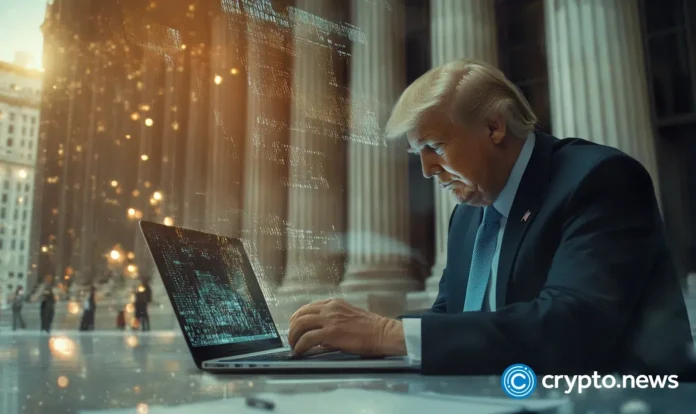Trump’s Latest Move: A Win for Crypto and a Blow to “Operation Chokepoint 2.0”
In a significant development, President Trump has signed an executive order aimed at preventing federal authorities from pressuring banks to cut ties with entire industries, a practice dubbed “Operation Chokepoint 2.0”. This move is being hailed as a major victory for companies that have been frozen out of the financial system, particularly those involved in digital assets. However, some analysts are warning that regulatory bodies could continue to target individual companies under the guise of risk management.
What’s Behind “Operation Chokepoint 2.0”?
For years, the FDIC had been urging banks to refuse services to customers involved in crypto transactions. However, Trump’s executive order, titled “Guarantee for All Americans”, puts a stop to such practices. The order states that no American should be denied access to financial services due to their constitutionally or legally protected convictions, affiliations, or political views. This is a clear nod to the crypto community, which has long been critical of the FDIC’s alleged attempts to stifle their access to banking services.
A Brief History of “Operation Chokepoint”
The term “Operation Chokepoint” originated during the Obama era, when it was alleged that the government was targeting political opponents through informal pressure on banks. The crypto community claims that a similar operation, dubbed “Operation Chokepoint 2.0”, was underway during the Biden era, with certain hedge funds and organizations being blocked from banking services due to their involvement in digital assets. Often, these customers were not given a clear reason for the refusal of service, with some being told it was due to their crypto activities.
Reactions to the Executive Order
The crypto community is welcoming the executive order, with many hailing it as a significant victory. Caitlin Long, a prominent crypto lawyer, has praised the order, saying it has “hidden gems” and shows that the White House understands that bank regulators are not always trustworthy. Long points out that the order creates an oversight unit outside of the banking sphere, which will supervise banks to ensure they do not refuse services to customers unfairly. However, Nic Carter, a risk capital provider, has warned that the order may not go far enough in preventing politicized debanking, and that regulatory bodies could continue to find ways to target individual companies.
A Path Forward
Carter suggests that the solution lies in increasing regulatory transparency and fairness, rather than focusing solely on the banks themselves. He argues that banks should be allowed to close accounts if they deem a customer too risky, but that they should be required to be more transparent and accountable in their decision-making processes. The removal of the “Confidential Supervisory Information” seal is also crucial, according to Carter, as it would allow customers to know precisely why they are being denied services. While the executive order is a step in the right direction, it remains to be seen whether it will be enough to prevent future instances of politicized debanking.

